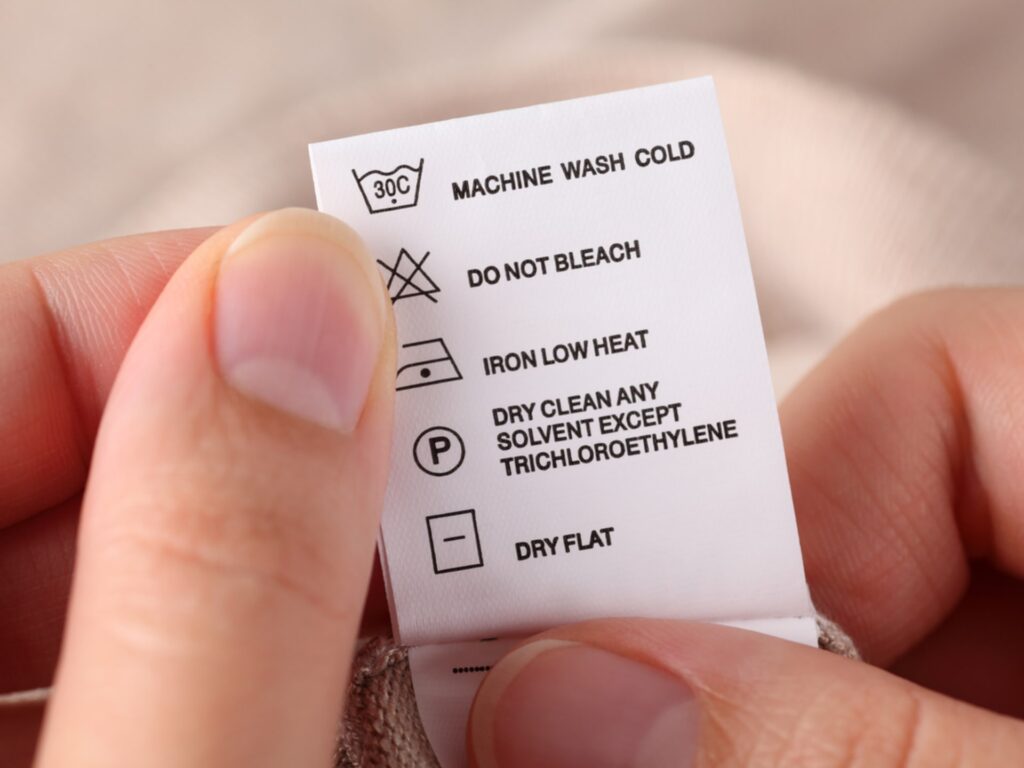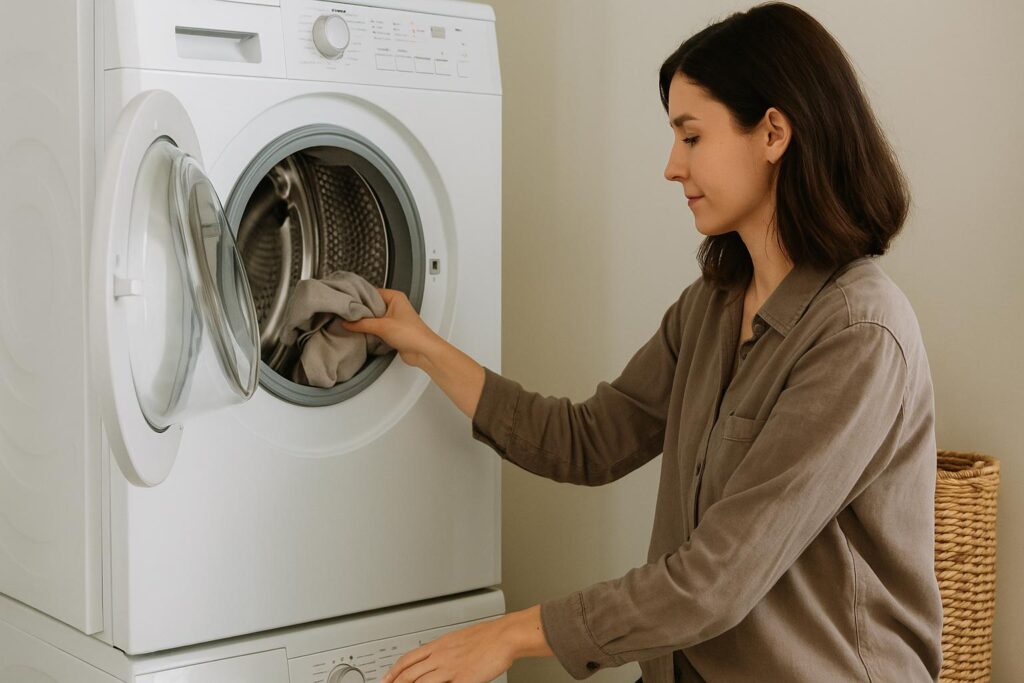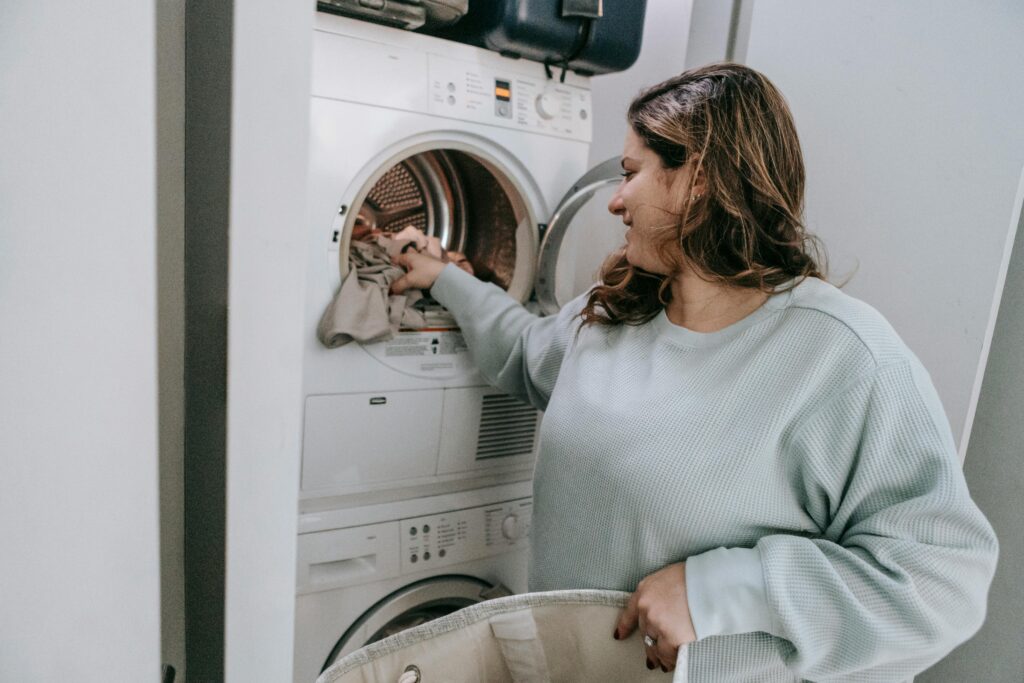Or, How to Stop Turning Your Favorite Shirt Into a Toddler Crop Top
Let’s face it—most of us don’t really know what those cryptic little hieroglyphics on our clothing tags mean. You know the ones. A tiny triangle. A square with a circle in it. An iron that looks like it escaped from a 1940s propaganda poster. Maybe you’ve squinted at them before tossing your hoodie into the washer and whispered, “You’ll survive,” like you’re sending it into battle. Spoiler: it didn’t.
But here’s the thing: fabric care labels are not optional advice. They’re not like your dentist suggesting you floss more. They’re legal guidelines for not destroying your clothes. Understanding them is the difference between looking sharp and looking like your wardrobe lost a fight with a weed whacker.
Let’s decode these textile tarot cards once and for all.
The Five Symbols That Rule Them All
Clothing care labels usually follow a system based on five basic categories. Memorize these like your life depends on it (or at least your underwear):
- Tub – Washing
- Triangle – Bleaching
- Square – Drying
- Iron – Ironing (duh)
- Circle – Dry Cleaning
Each symbol tells you what a fabric can and cannot handle. And when paired with dots, Xs, or lines, these symbols morph into full-blown instructions. Let’s go deep.
Washing: The Tub of Doom
This is the little symbol that looks like a bucket of water. It tells you whether you can machine wash, how hot the water should be, and if you should be gentle. Here’s how to read it:
- Tub with water only = Machine wash (standard cycle)
- Tub with hand = Hand wash (or if you’re Gen Z, “ask Mom”)
- Tub with a number or dots = That’s the max temperature allowed (30°C = cold, 40°C = warm, 60°C = hot)
- Tub with a line underneath = Use the gentle or delicate cycle
- Tub with an X = DO NOT WASH (pray for your dry cleaner)
Pro tip: When in doubt, cold water and a gentle cycle are your safest bets. It’s the Switzerland of laundry settings.
Bleaching: The Triangle of Regret
The triangle symbol governs your use of bleach—aka fabric’s worst frenemy.
- Plain triangle = Go ahead, bleach it like a 2000s boy band hairdo
- Triangle with two lines inside = Only use non-chlorine bleach
- Triangle with an X = Don’t you dare use bleach
Here’s the thing: if you’re not absolutely sure, just skip bleach altogether. Modern detergents are surprisingly good at stain-fighting. Also, bleach smells like regret and death.
Drying: The Square of Shrinkage
This one’s important, because this is where most laundry crimes are committed. That innocent-looking square? It’s trying to save your favorite sweater’s life.
- Square with a circle = Tumble dry
- One dot inside = Low heat
- Two dots = Medium heat
- Three dots = High heat (for fabrics that could probably survive a nuclear blast)
- Circle with an X = No tumble dry (air dry only)
- Square with a line inside = Lay flat to dry
- Square with three vertical lines = Hang dry
If it says “lay flat to dry,” and you hang it instead, don’t be shocked when your new knit sweater looks like a slouchy dress. Gravity is not your friend here.
Ironing: The Iron No One Owns Anymore
The iron symbol is there to help you avoid that “burned a hole in my pants” situation.
- Iron with one dot = Low heat (synthetics)
- Iron with two dots = Medium heat (poly blends, rayons)
- Iron with three dots = High heat (cotton, linen)
- Iron with X = Step away. Just don’t.
Don’t have an iron? Try a handheld steamer. Or hang clothes in the bathroom while you shower and pretend that counts (it kind of does).
Dry Cleaning: The Mysterious Circle
This is where things get a little fancy—and expensive.
- Circle alone = Dry clean
- Circle with an X = DO NOT dry clean
- Circle with a letter = Special instructions for dry cleaners (not for mere mortals like us)
If something says “dry clean only,” don’t test it in your washer unless you’re okay turning your $200 silk blouse into a handkerchief.
Why This Matters (Beyond Just Not Ruining Stuff)
Understanding care labels can:
- Save you money. Shrunk clothes = replacements = $$$.
- Extend garment life. Treat clothes right, and they’ll stop ghosting you after 3 washes.
- Reduce microplastics. Washing synthetics in hot water degrades them faster and sends more plastic into the oceans.
- Make you look like a grown-up. Nothing says “I have my life together” like a wrinkle-free shirt that still fits.
A Few Label Lies You Should Know
Let’s debunk a few myths and marketing fluff:
- “Dry Clean Only” sometimes means “We don’t want you to sue us.” Natural fibers like wool and silk can sometimes be gently hand washed. Proceed with caution—and maybe a test patch.
- “Hand Wash Only” doesn’t mean “You can’t machine wash.” If your machine has a wool or delicate cycle, you might be fine. Use a mesh bag and say a little prayer.
- Care labels are minimum viable survival guides, not optimal care guides. If you want your garment to last forever, baby it beyond the label.
TL;DR Care Label Decoder Card
Here’s your cheat sheet (laminate it, tattoo it, whatever works):
| Symbol | Meaning |
| 🧺 | Washing instructions (dots = temp, lines = gentleness) |
| 🔺 | Bleach? Only if you’re invited |
| 🔲 | Drying method (circle = tumble, lines = air dry) |
| ♨️ | Ironing (dots = how much your shirt can take) |
| 🧴 | Dry clean only if absolutely necessary (or expensive) |
Final Thoughts: You vs. the Label
At the end of the day, knowing how to read fabric care labels is like having Google Maps for your laundry routine. Could you try to wing it? Sure. But you’ll get lost, shrink something valuable, and end up emotionally damaged in the sweater aisle of Target.
So give yourself the gift of knowing. Let the tags talk. And next time you do laundry, remember: you’re not just washing clothes—you’re adulting like a legend.







